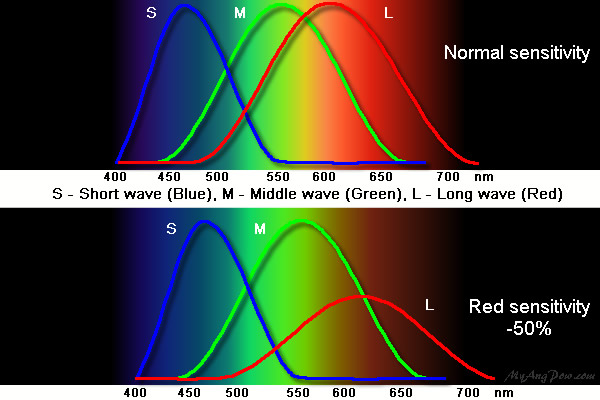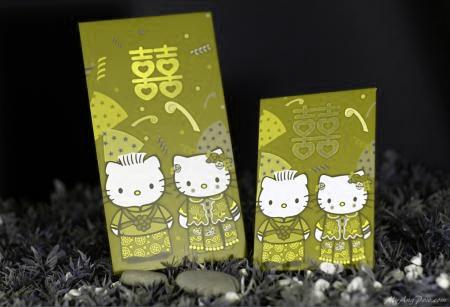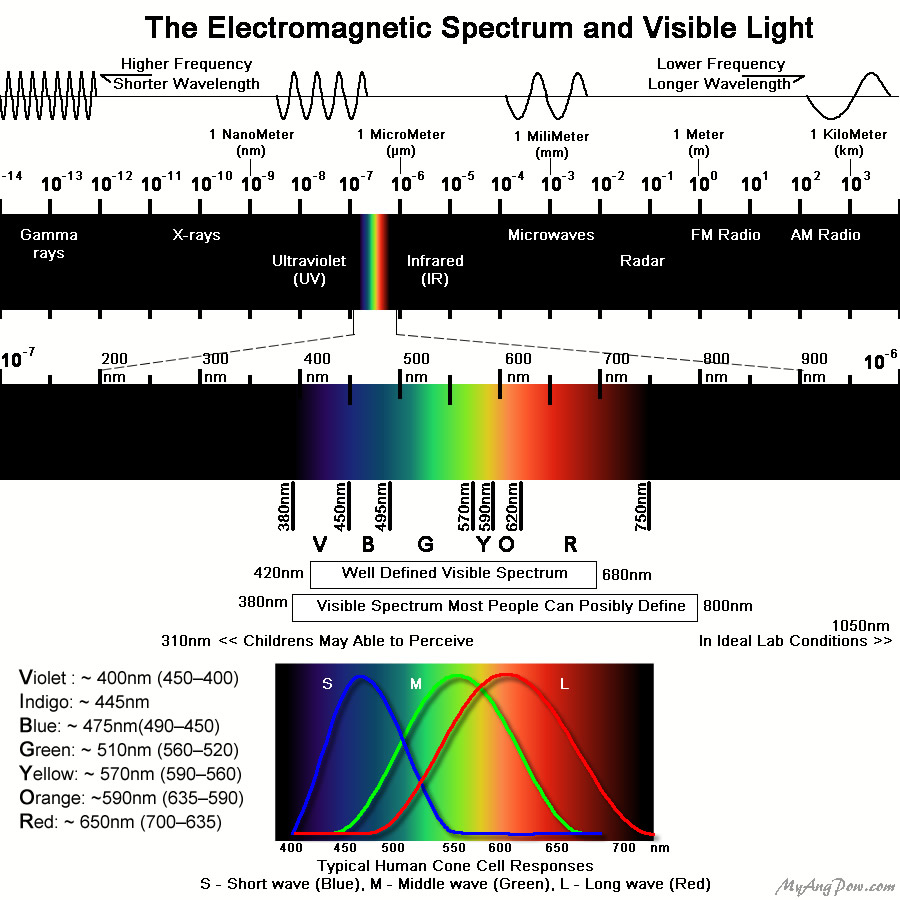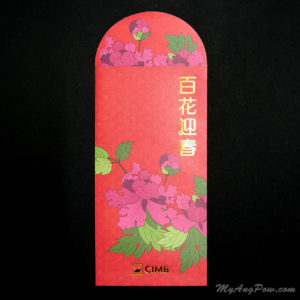- Color Perceptions
- Color Experiences
- Color Deficiency and Digital Content
- Red Vs Blue Vs Green
- Monochromacy
Other Chapters
Color Perceptions
Color is a perception by the human eyes. Colors bring extra meanings to our visual perception, from functional non verbal communications to aesthetics. However since it is a perception, no two beings will perceive an exact same experience, however is rather a psychological responds that given by the conscious brain, which is strictly unique to the observer and previous similar experience that gave meaning to that perception.
Each human eyes have millions of light sensitive light receptors (sensors) in the retinal surfaces, namely Rods and Cones. No two person will have the exact same number of Rods and Cones, which gave raise to slight variation to the visual perception of colors.
We can say an object is of particular color, all because of the experience of similarity that forms in our mind. Due to nature of color as a wavelength of photons/light (or electromagnetic waves), uncountable waves entering our eyes every moment; it exist as a spectrum from non visible long wavelength of radio and infra-red, to a spectrum of visible light, to spectrum of non visible short wavelength of ultra-violet to x-rays and gamma rays. Many of the spectrum are of non visible spectrum which doesn’t generates any “meanings” to our brain, and hence our mind don’t assume their existence, and don’t tell them apart like colors of visible spectrum do.
Color Experiences
As previously mentioned, No two person are the exact same, color perception defers. Many people are unaware of their color deficiencies, as we generally perceive the similar color (similar but not same) as same color, until when two person are challenge to tell a difference in the similar spectrum, some may unable to tell the difference while others can easily tell the difference. In color deficiency, it is similar to narrowing down a “visible spectrum” of light, any color which is not perceived is considered outside of the spectrum and do not bring meaning to the mind.

Comparing a Normal Visible Spectrum VS a Red Deficiency (-50%) Spectrum. Noted the Visible Spectrum is Narrowed Due to Red Deficiency.
Without a previous similar experience, we cant differentiate colors, as our mind cant tell the meaning of its difference. At birth, the first experience that form in the mind is light, subsequent experiences will tell the shades of lights/brightness/darkness, further experience will tell bright and dark colors, from understanding 7 colors of rainbow to understanding hues of colors. A example will be the usage of color pencil in drawing a picture, at younger age we only familiar to use 12 major colors in our drawing, however those who are better experience can use more than 24, 36, 48 colors color pencil, up to even professional ones which have more than 100 shades of colors.
Even color differentiation ability can be strongly decepted by previous experience. For example an apple which is supossingly red color in general perception, when it was view by a person with red deficiency, it might be appears in yellowish hue, but throughout his previous experience to associate that yellow hue as the term “Red” , he may still able to term another similar item, e.g red ball/ red pen etc , as color red color without issue. This experience will shape his perception of color without knowing that there is a preformed deception throughout his life.

The Hello Kitty Ang Pow as seen by a Protanopia (Red-Green Color Blindness) which affects 1% on Men. If person with Protanopia had first learned that this is “Red” , he will associate this “Olive color” as “Red”. He can correctly call any objects with similar red as “Red” although it doesn’t appears as a true red. When he is next presented with a real Olive, he will say the Olive is “Red”, as the mind already experienced an altered perception of “red”.
However the realization of that deception will only occur after a conflict in terms when brought to a challenge to differentiate a item with yellow hue and a item in true red side by side. This challenge is commonly used in color vision deficiency check, for example the famous classic ishihara color chart, where a “similar colored number” is merge with a “similar colored background” , a person with color deficiency will term both as “same colored” and unable to tell both apart.
Hence, Colors is in the eyes of the Observer. My red is not the same as your red. My yellow lemon may not be same as your yellow lemon. My blue sky is not the same as your blue sky.
Color Deficiency and Digital Content
In world of digital screens, the appearance of color is strictly defined by the color values, with a well defined range of brightness. In a 12bit color, each Red/Green/Blue is well defined into 16 shades of color in each color channel. In a 24bit true color, there is 256 different shades of each color of RGB. The more the bit per channel, the more possible shades is generated. Although with exact definition of color in the color value, there is still discrepancies in perceiving them, from device producing the color to environment viewing the color and finally the observer viewing the color and ability to tell them apart.
Below is the study on how color deficiency affects color perception in viewing colors in digital screen. This study is takes into consideration in website designing and content creation as every viewer is unique, and need to consider in avoiding certain color combination that will render a content invisible to some viewer with color deficiency. However there is still limitations as most Ang Pow is red in color, which might limit the view experience of some viewer.
Red Vs Blue Vs Green
Below is an example of color chart (color palette) that can be produced in a digital screen, generated by varying Red channel values against increasing values in Green channel and reducing value in Blue channel.
| Red Value | Hex G=0 B=F | Hex G=1 B=E | Hex G=2 B=D | Hex G=3 B=C | Hex G=4 B=B | Hex G=5 B=A | Hex G=6 B=9 | Hex G=7 B=8 | Hex G=8 B=7 | Hex G=9 B=6 | Hex G=A B=5 | Hex G=B B=4 | Hex G=C B=3 | Hex G=D B=2 | Hex G=E B=1 | Hex G=F B=0 |
|---|---|---|---|---|---|---|---|---|---|---|---|---|---|---|---|---|
| 0 | #00F | #01E | #02D | #03C | #04B | #05A | #069 | #078 | #087 | #096 | #0A5 | #0B4 | #0C3 | #0D2 | #0E1 | #0F0 |
| 1 | #10F | #11E | #12D | #13C | #14B | #15A | #169 | #178 | #187 | #196 | #1A5 | #1B4 | #1C3 | #1D2 | #1E1 | #1F0 |
| 2 | #20F | #21E | #22D | #23C | #24B | #25A | #269 | #278 | #287 | #296 | #2A5 | #2B4 | #2C3 | #2D2 | #2E1 | #2F0 |
| 3 | #30F | #31E | #32D | #33C | #34B | #35A | #369 | #378 | #387 | #396 | #3A5 | #3B4 | #3C3 | #3D2 | #3E1 | #3F0 |
| 4 | #40F | #41E | #42D | #43C | #44B | #45A | #469 | #478 | #487 | #496 | #4A5 | #4B4 | #4C3 | #4D2 | #4E1 | #4F0 |
| 5 | #50F | #51E | #52D | #53C | #54B | #55A | #569 | #578 | #587 | #596 | #5A5 | #5B4 | #5C3 | #5D2 | #5E1 | #5F0 |
| 6 | #60F | #61E | #62D | #63C | #64B | #65A | #669 | #678 | #687 | #696 | #6A5 | #6B4 | #6C3 | #6D2 | #6E1 | #6F0 |
| 7 | #70F | #71E | #72D | #73C | #74B | #75A | #769 | #778 | #787 | #796 | #7A5 | #7B4 | #7C3 | #7D2 | #7E1 | #7F0 |
| 8 | #80F | #81E | #82D | #83C | #84B | #85A | #869 | #878 | #887 | #896 | #8A5 | #8B4 | #8C3 | #8D2 | #8E1 | #8F0 |
| 9 | #90F | #91E | #92D | #93C | #94B | #95A | #969 | #978 | #987 | #996 | #9A5 | #9B4 | #9C3 | #9D2 | #9E1 | #9F0 |
| A | #A0F | #A1E | #A2D | #A3C | #A4B | #A5A | #A69 | #A78 | #A87 | #A96 | #AA5 | #AB4 | #AC3 | #AD2 | #AE1 | #AF0 |
| B | #B0F | #B1E | #B2D | #B3C | #B4B | #B5A | #B69 | #B78 | #B87 | #B96 | #BA5 | #BB4 | #BC3 | #BD2 | #BE1 | #BF0 |
| C | #C0F | #C1E | #C2D | #C3C | #C4B | #C5A | #C69 | #C78 | #C87 | #C96 | #CA5 | #CB4 | #CC3 | #CD2 | #CE1 | #CF0 |
| D | #D0F | #D1E | #D2D | #D3C | #D4B | #D5A | #D69 | #D78 | #D87 | #D96 | #DA5 | #DB4 | #DC3 | #DD2 | #DE1 | #DF0 |
| E | #E0F | #E1E | #E2D | #E3C | #E4B | #E5A | #E69 | #E78 | #E87 | #E96 | #EA5 | #EB4 | #EC3 | #ED2 | #EE1 | #EF0 |
| F | #F0F | #F1E | #F2D | #F3C | #F4B | #F5A | #F69 | #F78 | #F87 | #F96 | #FA5 | #FB4 | #FC3 | #FD2 | #FE1 | #FF0 |
Noted in normal vision, there will be distinctive blue color at the top left corner, green at the top right corner, Magenta (Blue + Red) at the bottom left corner and Yellow (green + Red) at the bottom right corner. Each color are equally distributed at all four quarters, with a near grey tone at the center of the table.
Back to Top
Monochromacy
Monochromacy (mono means single, chroma mean color) , also known as “total color blindness”, is the lack of ability to distinguish diffrent colors. It is caused by either cone defect (two or all three of the cone pigments are missing) or cone absence in the eye retina. They still can tell brightness from darkness, but unable to clearly diffrentiate diffrence in color, or lack in diffrenciation. It was thought to see things in black and white grayscale, like viewing a old black and white television.
Rod Monochromacy
Rod monochromacy known also as typical or complete achromatopsia, total color blindness, day blindness. It is an exceedingly rare (between 1 : 30,000 and 1 : 50,000), nonprogressive complete inability to distinguish any colors as a result of absent or nonfunctioning retinal cones.
It is an autosomal recessive congenital color vision condition, the inability to perceive color and to achieve satisfactory visual acuity at high light levels (typically exterior daylight) which is associated with light sensitivity (photophobia) as Rods only respond to faint levels of light and are very light sensitive, Bright light bleeches them.
Rod monochromacy Often accompany with involuntary eye movements (nystagmus).
A complete Achromatopsia will have reduced vision with 20/200 or less however incomplete or partial Achromatopsia may have better vision around 20/120 to 20/80. Red colored lenses with darkened light transmission help reduce the sensitivity to light and thus enhance visual functioning.
Cone monochromacy
Cone monochromacy (having one functioning type of cone instead of three) is incomplete achromatopsia with normal visual acuity. It is mainly because of dense distribution of cones near the fovea compare to rods at the periphery, and hence visual acuity is preserved. Cones are less active in dim light, but useful in bright light, hence Cone monochromacy do not have photophobia like Rod monochromacy do.
Blue-cone monochromacy
Blue-cone monochromacy also known as S-cone (short wavelength – blue) monochromacy. It is a rare form (1 in 100,000 in men) of X-linked monochromatism is caused by loss or rearrangement of the genes encoding L- (Long wavelength – Red) and M-cones (Middle wavelength – Green). Because of that only blue color receptors (S-cones) and rods are transmitting color and/or brightness information.
Green-cone monochromacy
Green-cone monochromacy also known as M-cone (Middle wavelength – Green) monochromacy. It is a condition where the blue and red cones are absent in the fovea. It is present in less than 1 in 1 million (1,000,000) people.
Red-cone monochromacy
Red-cone monochromacy also known as L-cone (Long wavelength – Red) monochromacy. It is a condition where the blue and green cones are absent in the fovea. It is also present in less than 1 in 1 million (1,000,000) people.
Red Vs Blue Vs Green in Achromatopsia ~ 0.005% of population
Below is an estimated color seen by person with Achromatopsia while they look at the above Red Vs Blue Vs Green color table. In the table is the actual color value on digital screen, mouse over for color value seen by person with Achromatopsia.
| 0 | 1 | 2 | 3 | 4 | 5 | 6 | 7 | 8 | 9 | A | B | C | D | E | F | |
|---|---|---|---|---|---|---|---|---|---|---|---|---|---|---|---|---|
| 0 | #00F | #01E | #02D | #03C | #04B | #05A | #069 | #078 | #087 | #096 | #0A5 | #0B4 | #0C3 | #0D2 | #0E1 | #0F0 |
| 1 | #10F | #11E | #12D | #13C | #14B | #15A | #169 | #178 | #187 | #196 | #1A5 | #1B4 | #1C3 | #1D2 | #1E1 | #1F0 |
| 2 | #20F | #21E | #22D | #23C | #24B | #25A | #269 | #278 | #287 | #296 | #2A5 | #2B4 | #2C3 | #2D2 | #2E1 | #2F0 |
| 3 | #30F | #31E | #32D | #33C | #34B | #35A | #369 | #378 | #387 | #396 | #3A5 | #3B4 | #3C3 | #3D2 | #3E1 | #3F0 |
| 4 | #40F | #41E | #42D | #43C | #44B | #45A | #469 | #478 | #487 | #496 | #4A5 | #4B4 | #4C3 | #4D2 | #4E1 | #4F0 |
| 5 | #50F | #51E | #52D | #53C | #54B | #55A | #569 | #578 | #587 | #596 | #5A5 | #5B4 | #5C3 | #5D2 | #5E1 | #5F0 |
| 6 | #60F | #61E | #62D | #63C | #64B | #65A | #669 | #678 | #687 | #696 | #6A5 | #6B4 | #6C3 | #6D2 | #6E1 | #6F0 |
| 7 | #70F | #71E | #72D | #73C | #74B | #75A | #769 | #778 | #787 | #796 | #7A5 | #7B4 | #7C3 | #7D2 | #7E1 | #7F0 |
| 8 | #80F | #81E | #82D | #83C | #84B | #85A | #869 | #878 | #887 | #896 | #8A5 | #8B4 | #8C3 | #8D2 | #8E1 | #8F0 |
| 9 | #90F | #91E | #92D | #93C | #94B | #95A | #969 | #978 | #987 | #996 | #9A5 | #9B4 | #9C3 | #9D2 | #9E1 | #9F0 |
| A | #A0F | #A1E | #A2D | #A3C | #A4B | #A5A | #A69 | #A78 | #A87 | #A96 | #AA5 | #AB4 | #AC3 | #AD2 | #AE1 | #AF0 |
| B | #B0F | #B1E | #B2D | #B3C | #B4B | #B5A | #B69 | #B78 | #B87 | #B96 | #BA5 | #BB4 | #BC3 | #BD2 | #BE1 | #BF0 |
| C | #C0F | #C1E | #C2D | #C3C | #C4B | #C5A | #C69 | #C78 | #C87 | #C96 | #CA5 | #CB4 | #CC3 | #CD2 | #CE1 | #CF0 |
| D | #D0F | #D1E | #D2D | #D3C | #D4B | #D5A | #D69 | #D78 | #D87 | #D96 | #DA5 | #DB4 | #DC3 | #DD2 | #DE1 | #DF0 |
| E | #E0F | #E1E | #E2D | #E3C | #E4B | #E5A | #E69 | #E78 | #E87 | #E96 | #EA5 | #EB4 | #EC3 | #ED2 | #EE1 | #EF0 |
| F | #F0F | #F1E | #F2D | #F3C | #F4B | #F5A | #F69 | #F78 | #F87 | #F96 | #FA5 | #FB4 | #FC3 | #FD2 | #FE1 | #FF0 |
Note that there is minimal or no distinctive color variation between the three colors, however as the color value gets higher (brighter) it becomes lighter.
Red Vs Blue Vs Green in Atypical Achromatopsia ~ 0.001% of population
Below is an estimated color seen by person with Atypical Achromatopsia while they look at the above Red Vs Blue Vs Green color table. In the table is the actual color value on digital screen, mouse over for color value seen by person with Atypical Achromatopsia.
| 0 | 1 | 2 | 3 | 4 | 5 | 6 | 7 | 8 | 9 | A | B | C | D | E | F | |
|---|---|---|---|---|---|---|---|---|---|---|---|---|---|---|---|---|
| 0 | #00F | #01E | #02D | #03C | #04B | #05A | #069 | #078 | #087 | #096 | #0A5 | #0B4 | #0C3 | #0D2 | #0E1 | #0F0 |
| 1 | #10F | #11E | #12D | #13C | #14B | #15A | #169 | #178 | #187 | #196 | #1A5 | #1B4 | #1C3 | #1D2 | #1E1 | #1F0 |
| 2 | #20F | #21E | #22D | #23C | #24B | #25A | #269 | #278 | #287 | #296 | #2A5 | #2B4 | #2C3 | #2D2 | #2E1 | #2F0 |
| 3 | #30F | #31E | #32D | #33C | #34B | #35A | #369 | #378 | #387 | #396 | #3A5 | #3B4 | #3C3 | #3D2 | #3E1 | #3F0 |
| 4 | #40F | #41E | #42D | #43C | #44B | #45A | #469 | #478 | #487 | #496 | #4A5 | #4B4 | #4C3 | #4D2 | #4E1 | #4F0 |
| 5 | #50F | #51E | #52D | #53C | #54B | #55A | #569 | #578 | #587 | #596 | #5A5 | #5B4 | #5C3 | #5D2 | #5E1 | #5F0 |
| 6 | #60F | #61E | #62D | #63C | #64B | #65A | #669 | #678 | #687 | #696 | #6A5 | #6B4 | #6C3 | #6D2 | #6E1 | #6F0 |
| 7 | #70F | #71E | #72D | #73C | #74B | #75A | #769 | #778 | #787 | #796 | #7A5 | #7B4 | #7C3 | #7D2 | #7E1 | #7F0 |
| 8 | #80F | #81E | #82D | #83C | #84B | #85A | #869 | #878 | #887 | #896 | #8A5 | #8B4 | #8C3 | #8D2 | #8E1 | #8F0 |
| 9 | #90F | #91E | #92D | #93C | #94B | #95A | #969 | #978 | #987 | #996 | #9A5 | #9B4 | #9C3 | #9D2 | #9E1 | #9F0 |
| A | #A0F | #A1E | #A2D | #A3C | #A4B | #A5A | #A69 | #A78 | #A87 | #A96 | #AA5 | #AB4 | #AC3 | #AD2 | #AE1 | #AF0 |
| B | #B0F | #B1E | #B2D | #B3C | #B4B | #B5A | #B69 | #B78 | #B87 | #B96 | #BA5 | #BB4 | #BC3 | #BD2 | #BE1 | #BF0 |
| C | #C0F | #C1E | #C2D | #C3C | #C4B | #C5A | #C69 | #C78 | #C87 | #C96 | #CA5 | #CB4 | #CC3 | #CD2 | #CE1 | #CF0 |
| D | #D0F | #D1E | #D2D | #D3C | #D4B | #D5A | #D69 | #D78 | #D87 | #D96 | #DA5 | #DB4 | #DC3 | #DD2 | #DE1 | #DF0 |
| E | #E0F | #E1E | #E2D | #E3C | #E4B | #E5A | #E69 | #E78 | #E87 | #E96 | #EA5 | #EB4 | #EC3 | #ED2 | #EE1 | #EF0 |
| F | #F0F | #F1E | #F2D | #F3C | #F4B | #F5A | #F69 | #F78 | #F87 | #F96 | #FA5 | #FB4 | #FC3 | #FD2 | #FE1 | #FF0 |
Noted all the hues are reduced in intensity and the gradient is not clearly distinctive. However the darkness and lightness can be slightly differentiate.













